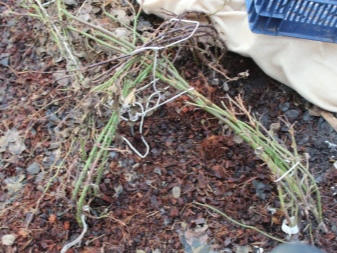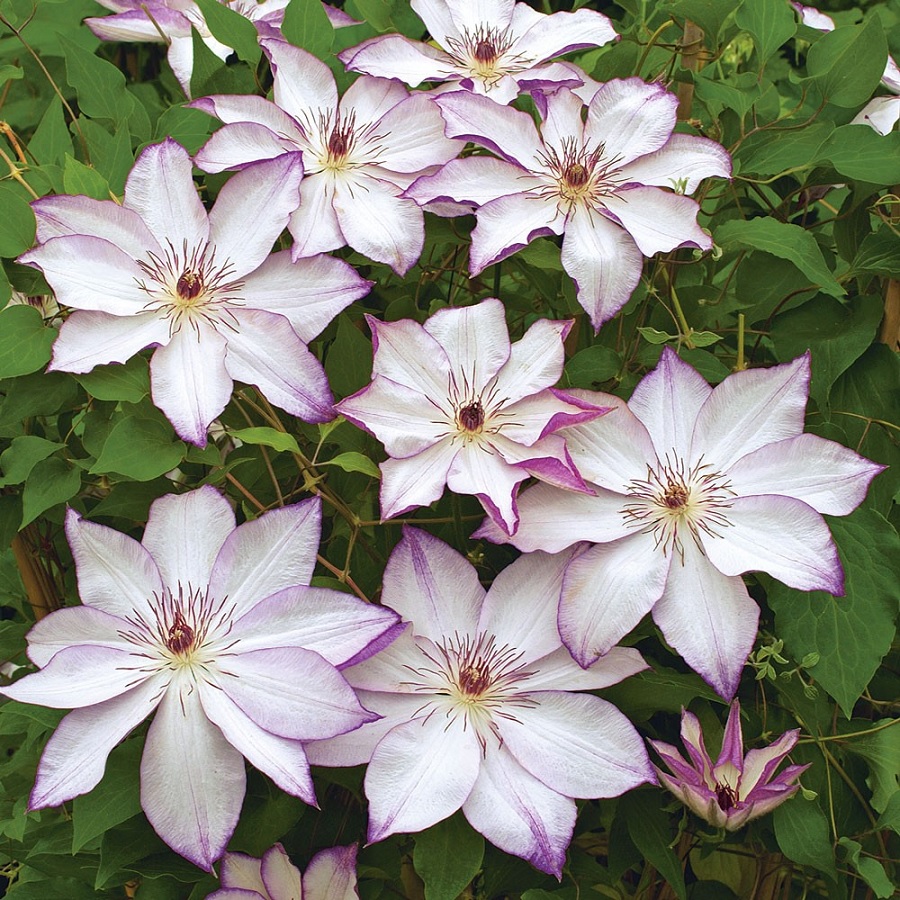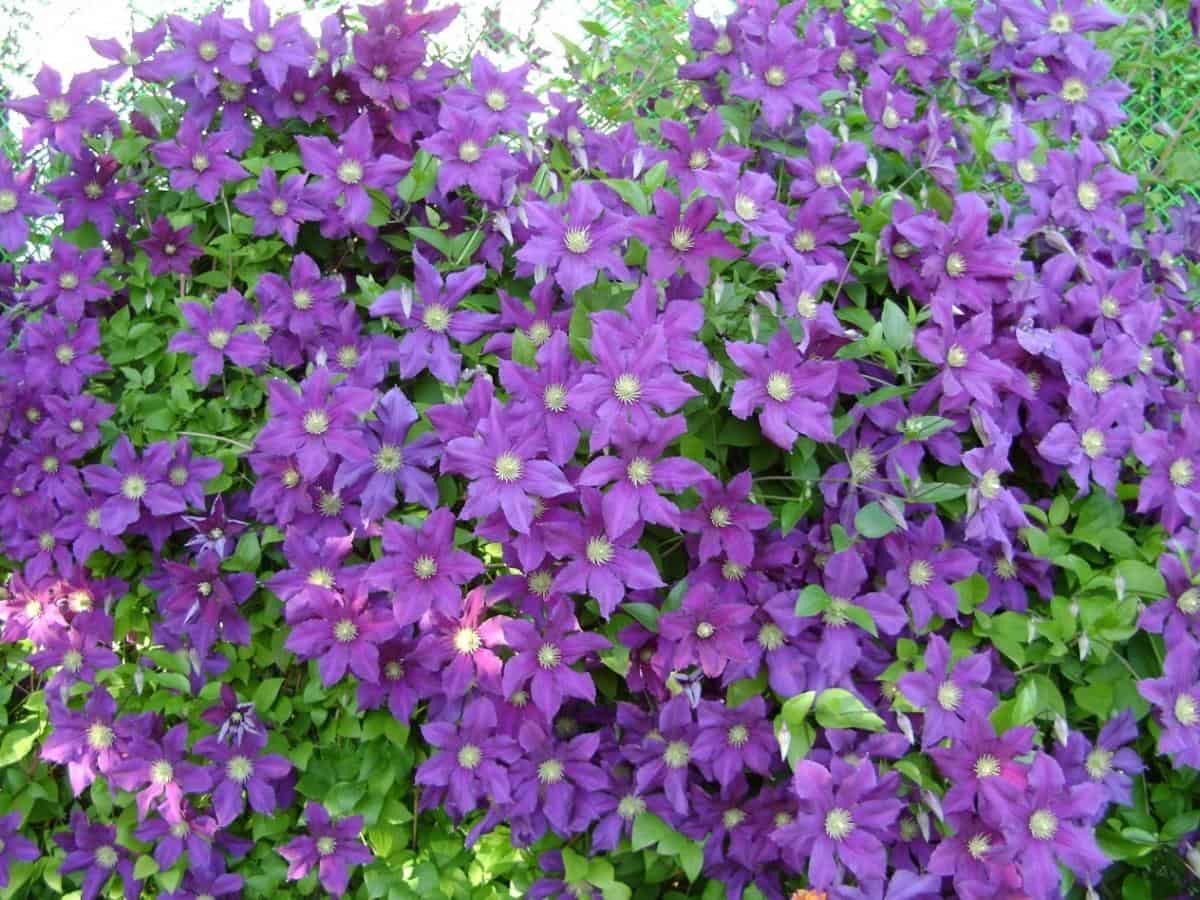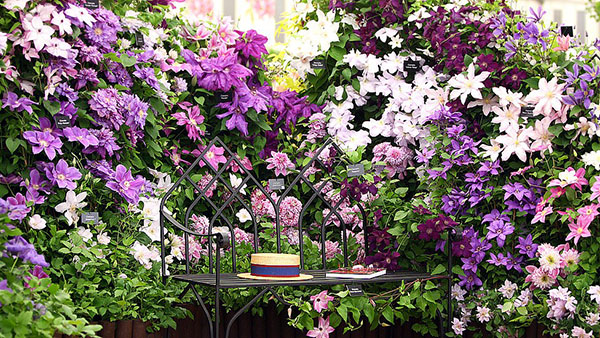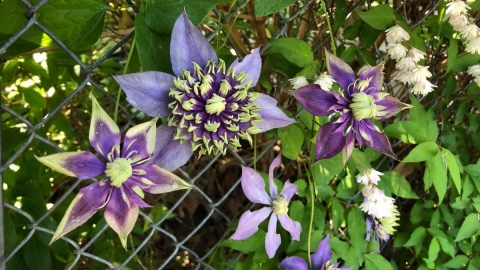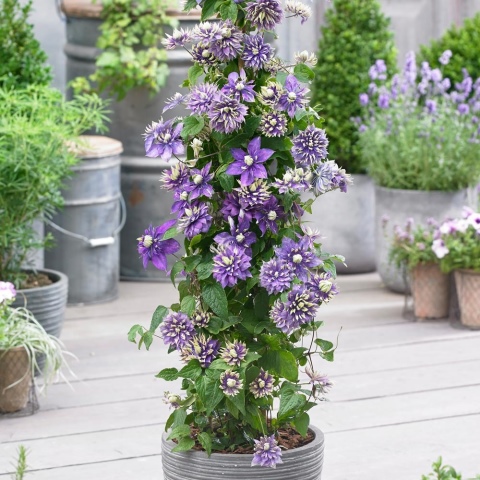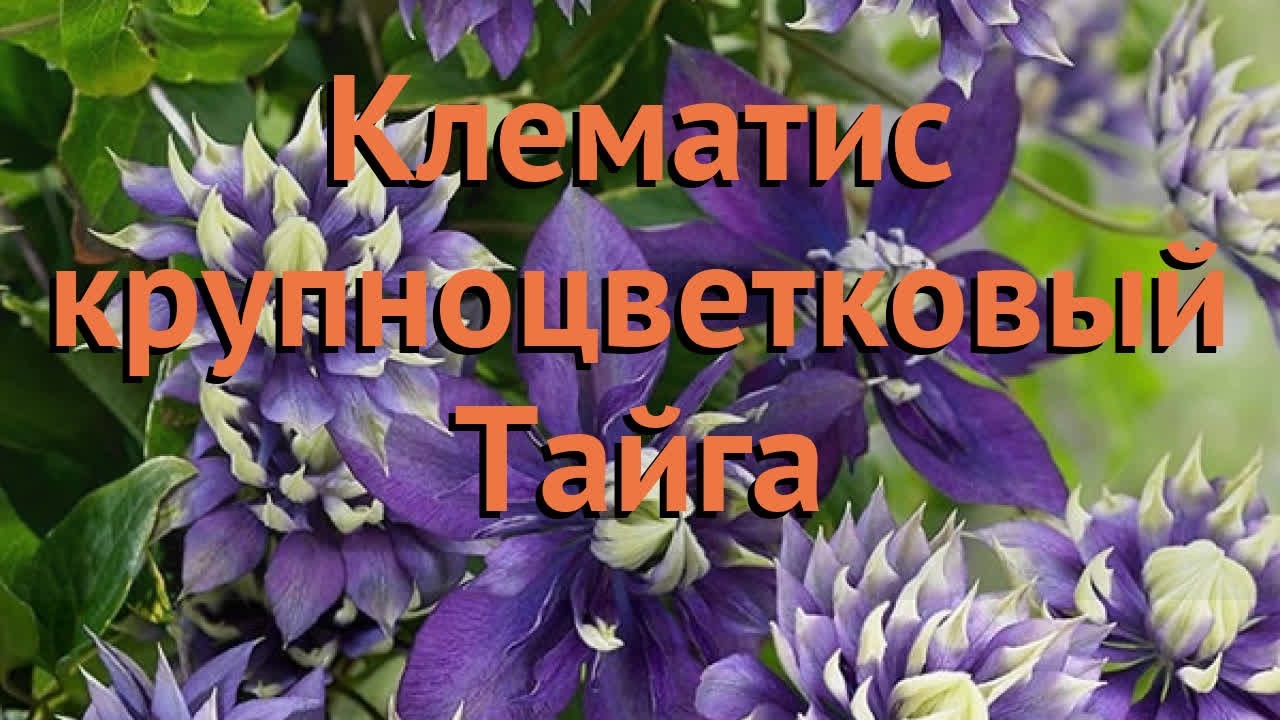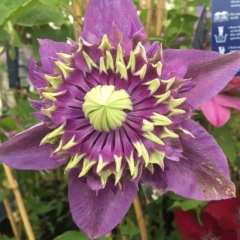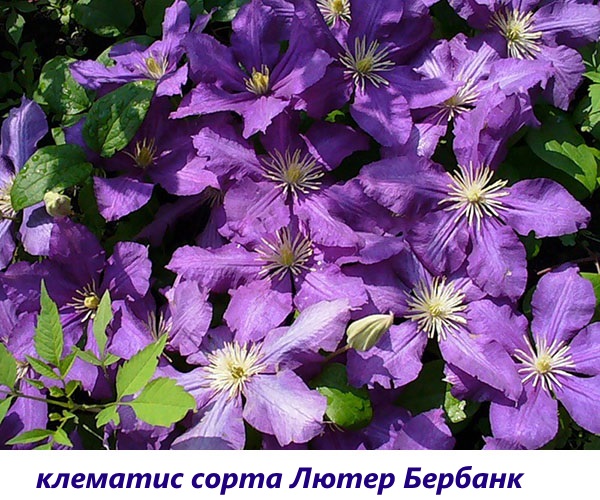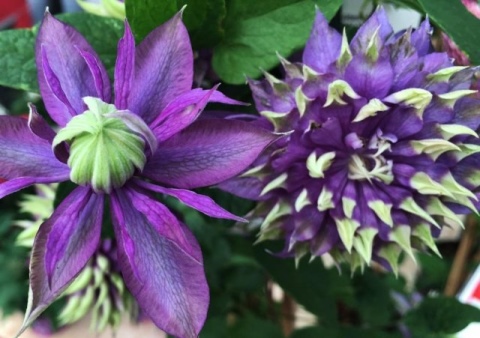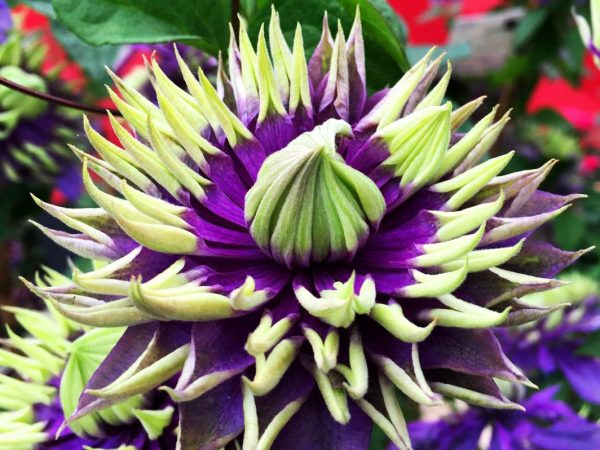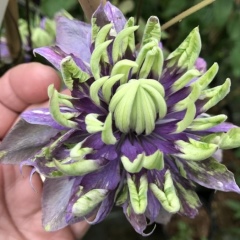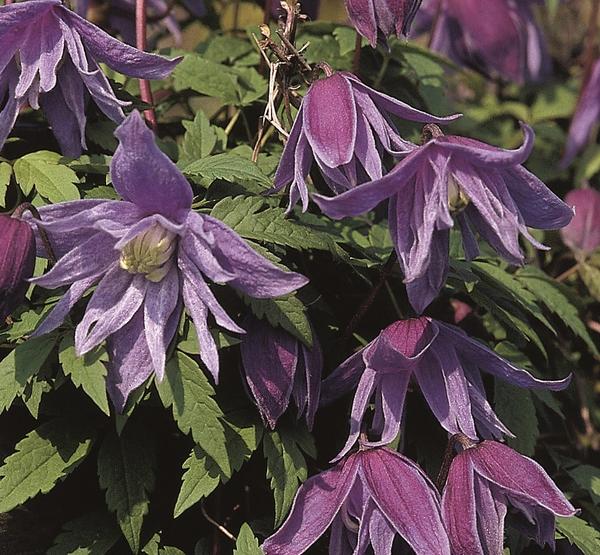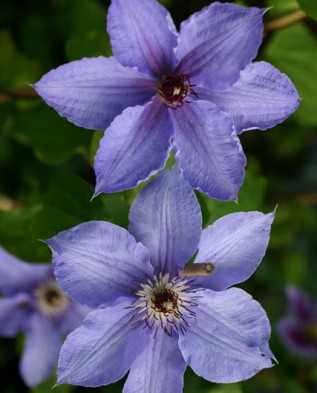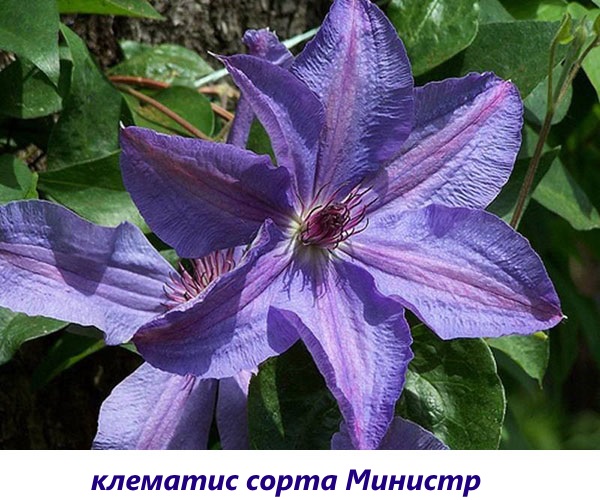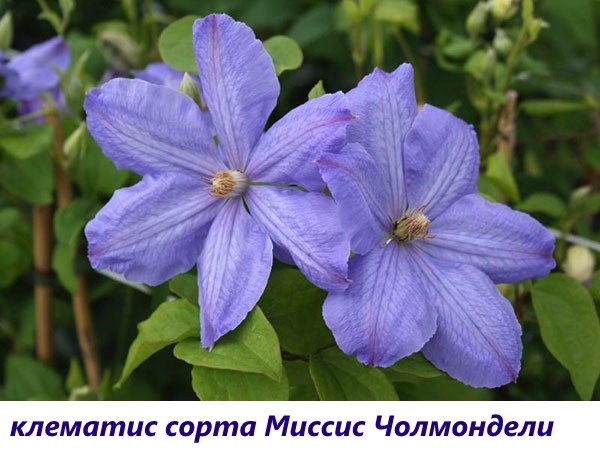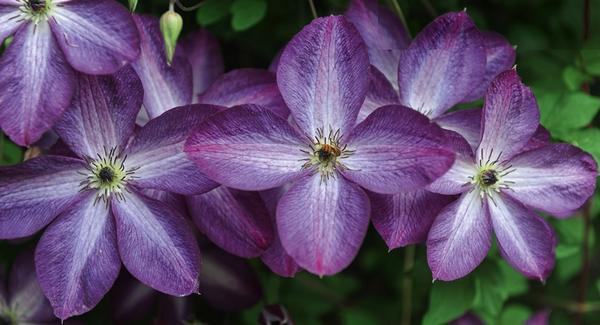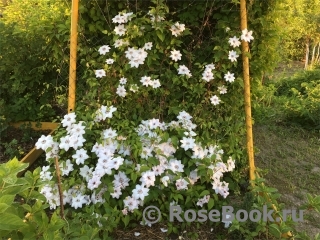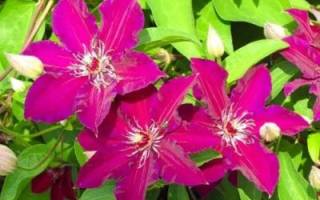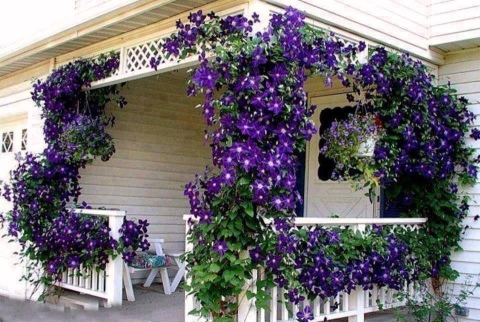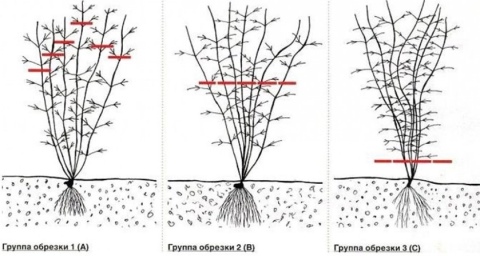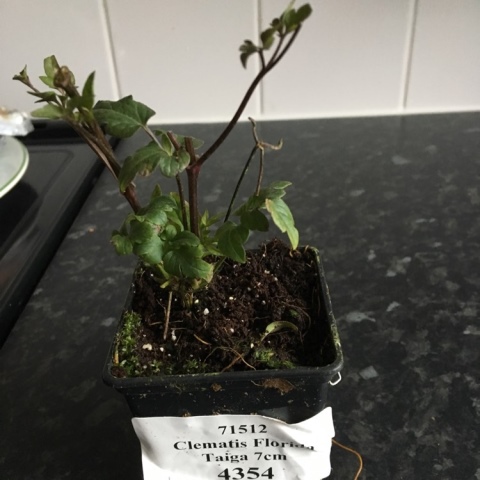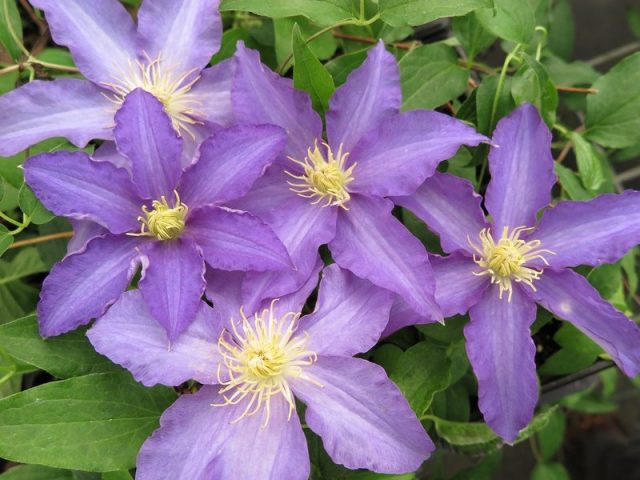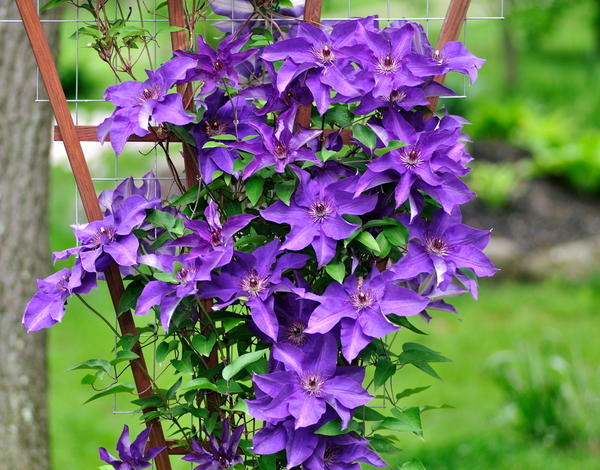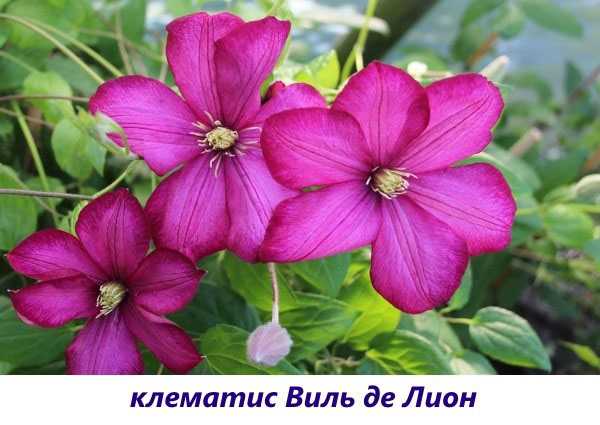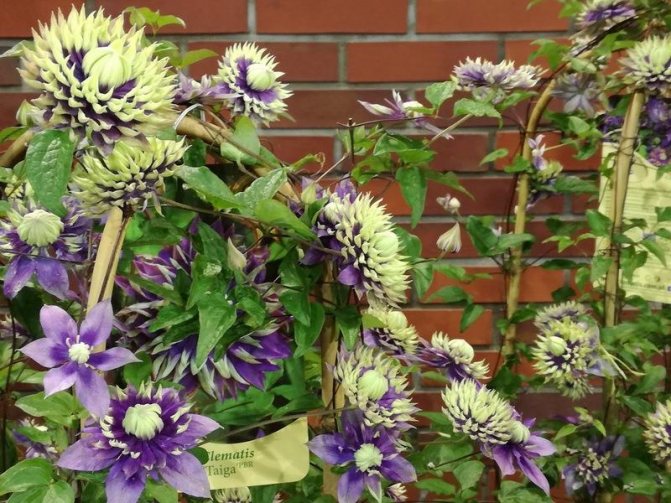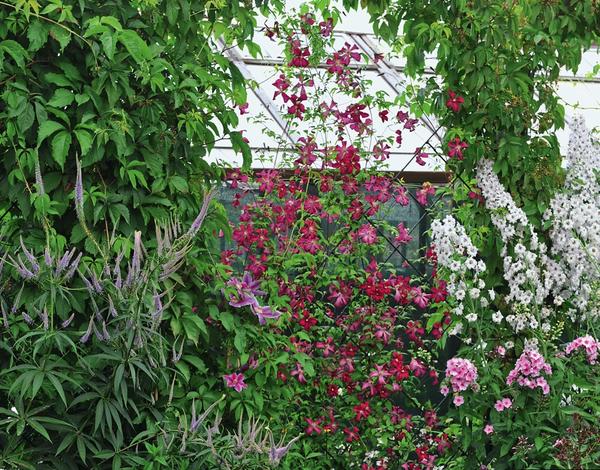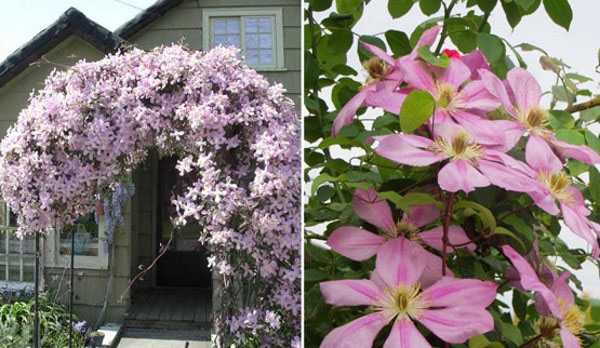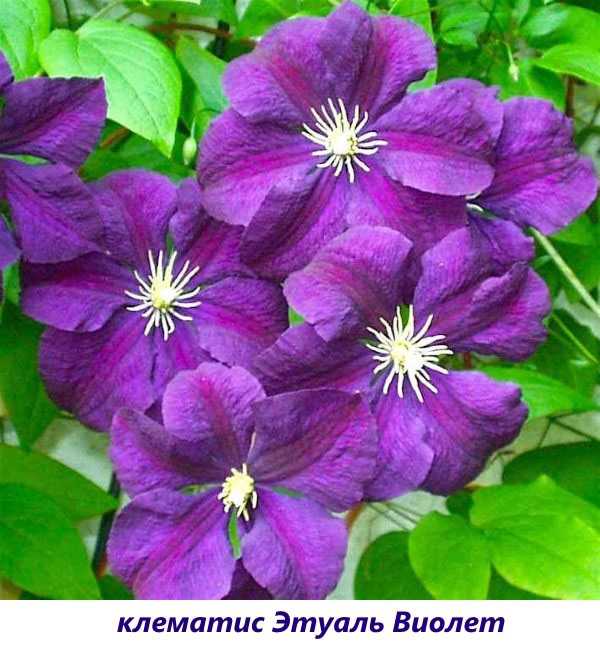Peculiarities
The most popular among yellow clematis is Tangut. This is a short perennial plant, whose height in the wild does not exceed 30 cm. Also, this variety can be in the form of vines. Its main feature is the bell-shaped buds that lean towards the ground. The lovely inflorescences of ripe lemon color exude a pleasant fresh aroma. The leaves of the plant are colored dark green and are rarely found on the stem.
Experts say that in regions with unfavorable weather conditions, Tangut clematis, without giving a second flowering, still pleases gardeners with its appearance. This is due to the fact that the plant is decorated with silvery seedlings. They are used by florists in the preparation of dry compositions. In addition, inflorescences of "sunny" shades are found among the following varieties.
"Yellow Queen". The variety belongs to the large-flowered varieties. It is a vine that clings to the support with the roots of the leaves. Clematis with a beautiful name is known for its original color: a large bud of a pale yellow color with a silvery sheen will adorn any site. This color is a rare occurrence for large-flowered clematis. In addition to open areas, "Yellow Queen" grows well in containers and is able to fill any room with bright colors.
What types and varieties of clematis are grown in a container?
For growing in pots, low-growing and medium-sized clematis (with a liana length of 1.5-2.5 m) with abundant and long flowering are suitable. In this case, the inflorescences should form as close as possible to the roots of the plant.
Some varieties of the following types of clematis meet these requirements:
- clematis Armanda,
- clematis viticella,
- clematis Zhakmana,
- clematis manchurian,
- spreading clematis,
- clematis tanguica,
- clematis florida,
- woolly clematis.
And now let's talk about the most popular varieties of clematis for a container garden in more detail.
Alexandrite
Alexandrite strikes with luxurious red-purple inflorescences with a creamy yellow anther in the center. The diameter of the flowers is 14 cm. The petals have a wavy edge. This handsome man blooms from mid-July to October. The length of the lash is about 2 m, in rare cases it grows up to 3 m.
Clematis Alexandrite belongs to the 3rd group of pruning.
Read more about the rules for trimming this group in our material:
Clematis 3 pruning groups: photos and descriptions of varieties
We answer the main questions about clematis of the 3rd pruning group.
Alyonushka
Alyonushka is a charming clematis with pale pink bell-shaped inflorescences. The length of the liana does not exceed 1.5-2.5 m, so this variety is great for growing in a pot on balconies and loggias.
The shoots of plants of this variety are not clinging, therefore they need a garter.
Clematis Alyonushka blooms from June to September. Differs in high frost resistance. Refers to the 3rd group of trimming.
Joan of Arc
Zhanna D'Arc is a clematis with snow-white inflorescences with a diameter of 15-20 cm.
This compact plant with shoots about 2-2.5 m long will thrive in a container.
This clematis blooms twice a season: in May-June and in August-September.
The inflorescences on the shoots of the current year are simple, on the last year's ones - terry.
Refers to the 2nd trimming group.
Terry varieties of clematis - photos, names, descriptions
A selection of 23 varieties of clematis with double flowers.
Lazurshtern
The height of Lazurshtern clematis does not exceed 2-3 m, so it can be safely planted in containers and grown on patios and balconies.
It attracts attention with large lavender-lilac flowers. At the same time, the flowering of this plant is repeated
The first wave occurs in May-June, the second - in August-September.
The Lazurshtern variety belongs to the 2nd pruning group.
Versailles
The Versailles variety from the Monrovia nursery will delight you with the rich color of the inflorescences - the petals are violet-purple with lighter veins in the center.
This clematis only grows up to 1-1.2 m, so it can not only be grown in pots, but also used as a ground cover plant.
Clematis Versailles blooms all season - from June to September.
This clematis belongs to the 3rd pruning group.
Madame von Hott
The length of the shoots of this clematis reaches 2.5-3 m. The flowers of Madame von Hott's clematis are large - about 18 cm in diameter, snow-white, with dark purple anthers, double.
This clematis blooms again: the first wave on last year's shoots in May-June, the second, on the shoots of this year, in August-October.
Refers to the 2nd trimming group.
Rhapsody
The flowers of the Rhapsody variety clematis are not only beautiful (large, spectacular sapphire blue with yellow anthers), but also fragrant. It blooms very luxuriantly from June to October.
The "growth" of this plant is 1.5-2 m, which makes it an ideal inhabitant of loggias and balconies.
Refers to the 3rd group of trimming.
Teshio
Teshio is a terry variety of clematis with lush purple inflorescences. Flowering occurs in the first half of the season - May-July.
The height of the plant is about 1.5-2 m. This clematis belongs to the 2nd pruning group.
Teshio is a great choice for a container garden.
Jubilee-70
Jubilee-70 is a clematis variety with a half-century history. He will conquer you with velvety inflorescences of an unusual purple-violet hue.
This miracle blooms very profusely in June-July. The maximum length of the shoots is 3.5 m.
Clematis Jubilee-70 belongs to the 3rd group of pruning.
Yukiokoshi
Clematis Yukiokoshi is a time-tested Japanese variety. It is a re-flowering plant. The first wave of flowering occurs in May-June, the second in August-September.
The height of this clematis is 2-2.5 m. It belongs to the 2nd pruning group.
If you can't choose one variety in this variety, why limit yourself? In container gardens, clematis looks great with a contrasting color of inflorescences. For example, purple and white, pink and blue. Read more about how to fit clematis into the garden landscape design in our material:
Clematis in landscape design: a luxurious decoration of the yard
Clematis delights with their lush flowering all summer.
Follow-up care
After the young shoots begin to grow, it is necessary to monitor their development. Vines must be tied to prepared supports and guided. This must be done so that they are all covered with flowers.


Watering
Water the clematis once a week. On very hot days, this should be done 3 times a week. In the first year after planting, plants need 10 to 20 liters per bush. But for an adult you will need a little more water - up to 35–45 liters. Also, do not forget to loosen the ground around the bush after each watering. Alternatively, you can lay a layer of mulch to prevent moisture from evaporating too quickly. You can use unnecessary weeds or ordinary grass for this.
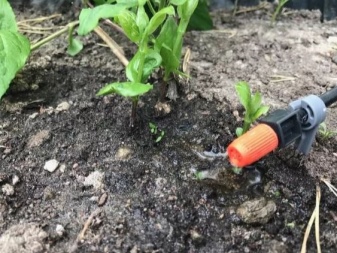
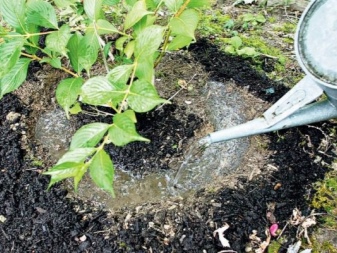
Top dressing
If there is an opportunity to use organic fertilizers as top dressing, then you should not miss it. So, for the winter period, you can fill the ground around the bush with humus. In the summer, a liquid solution from mullein or bird droppings is suitable for this. Those who prefer mineral fertilizers need to know that they need to be applied at least 3 times per season.
- In the first period of development of clematis, a urea solution can be used. 10 liters of water will require 35–45 grams of this fertilizer. Under one bush, you will need to add up to 5 liters of the resulting liquid.
- When flowering begins, you can apply a solution based on nitroammophoska. This will require 35–45 grams of this fertilizer and 25 grams of potassium humate. All this must be dissolved in 10 liters of water.One bush will require one bucket of prepared solution.
- After the plant has completely bloomed, it is necessary to water it with a solution made from the following components: 35 grams of superphosphate and 35 grams of potassium sulfate are needed per bucket. A bush requires 5 liters of this solution.

Preparing for winter
Although such a plant is characterized by high resistance to frost, it still needs to be covered for the winter period. Sawdust, peat, and ordinary fallen leaves can be used for this. In addition, all vines must be removed from the supports and carefully rolled up. They also need to be covered a little. Clematis can only be opened with the onset of heat.
